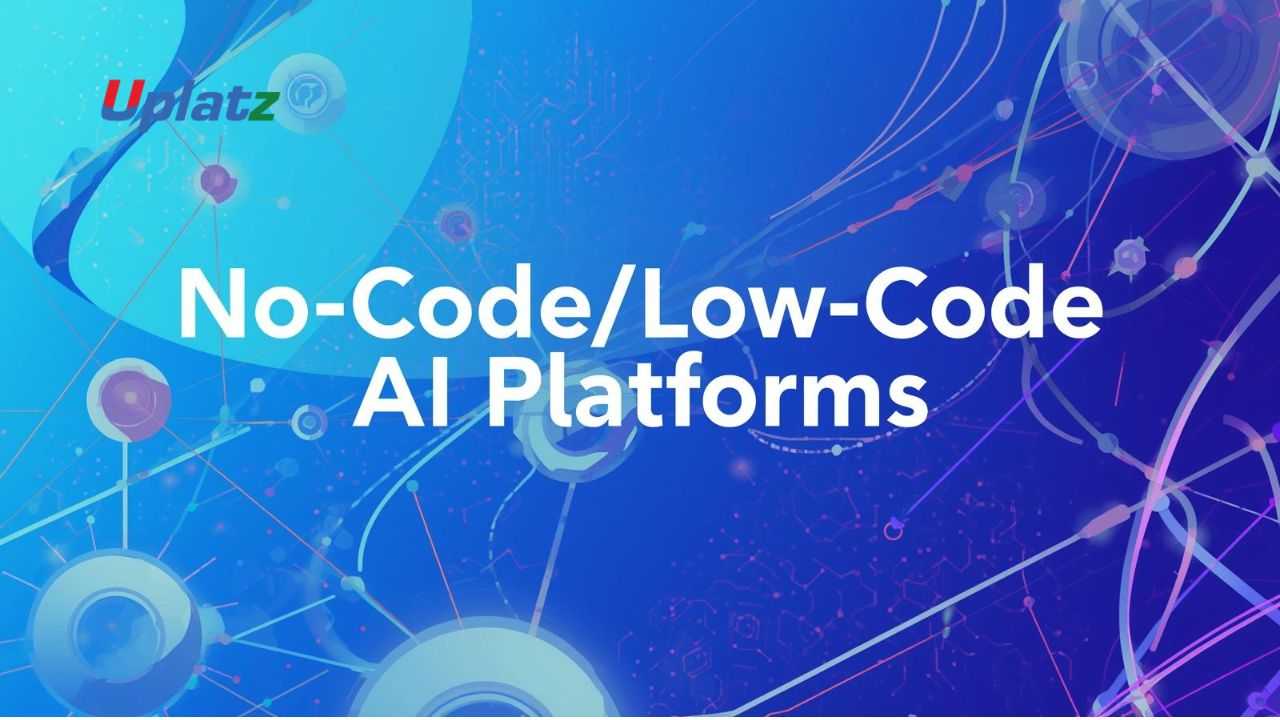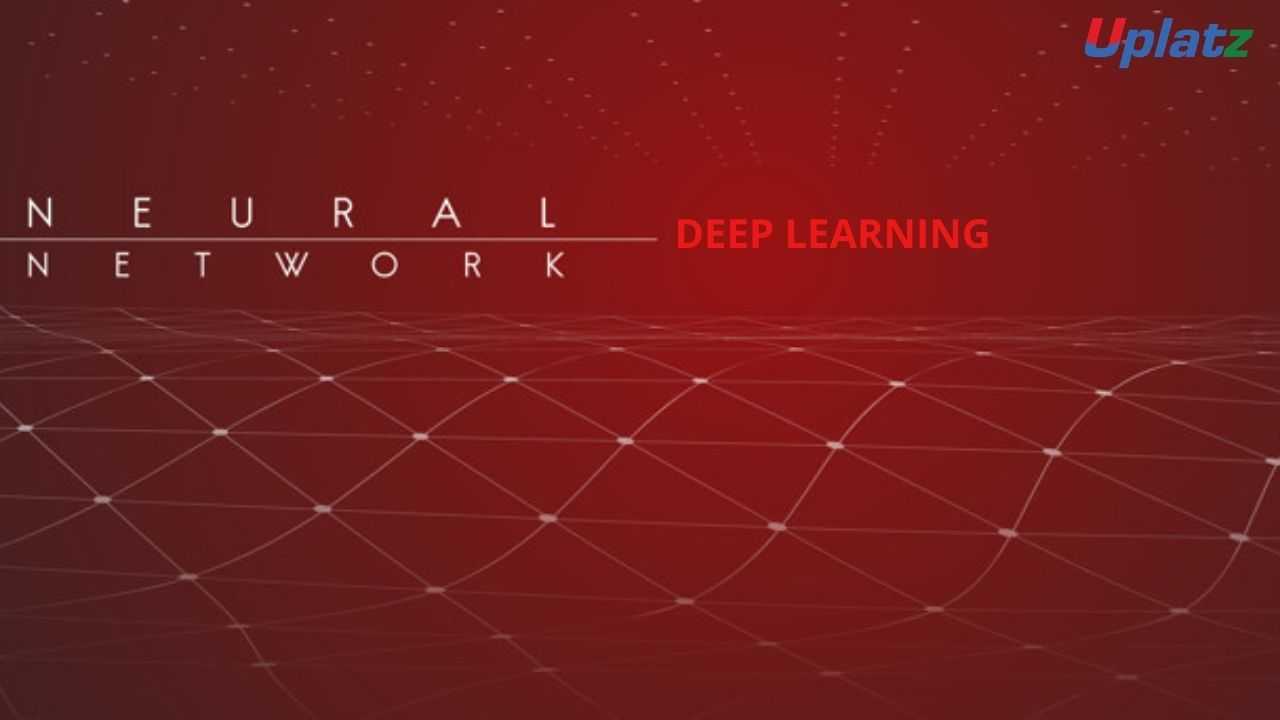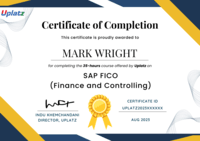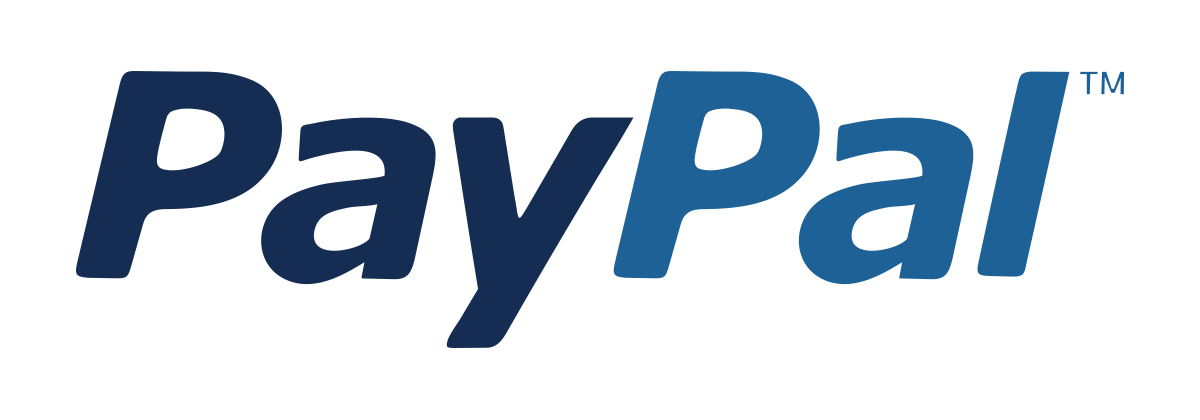No-Code/Low-Code AI Platforms
Build intelligent AI solutions effortlessly using no-code and low-code automation tools. Price Match Guarantee
Full Lifetime Access
Access on any Device
Technical Support
Secure Checkout
Course Completion Certificate
Price Match Guarantee
Full Lifetime Access
Access on any Device
Technical Support
Secure Checkout
Course Completion Certificate
 92% Started a new career
BUY THIS COURSE (
92% Started a new career
BUY THIS COURSE (GBP 12 GBP 29 )-
 81% Got a pay increase and promotion
81% Got a pay increase and promotion
Students also bought -
-

- Low-Code and No-Code Development
- 20 Hours
- GBP 12
- 560 Learners
-

- Deep Learning Foundation
- 10 Hours
- GBP 12
- 1061 Learners
-

- Figma
- 10 Hours
- GBP 12
- 10 Learners

No-Code/Low-Code AI Platforms – Democratizing Artificial Intelligence Development
No-Code/Low-Code AI Platforms is a hands-on, practical course that empowers learners to build AI-driven solutions without extensive coding experience. Designed for professionals across domains, this course introduces the concepts, tools, and workflows that enable rapid AI model development, deployment, and automation using visual interfaces and minimal programming.
As AI becomes integral to every business, no-code and low-code platforms allow organizations to harness machine learning and automation quickly. This course explores popular tools such as Google AutoML, Microsoft Power Platform, DataRobot, H2O.ai, Peltarion, and Make (Integromat)—covering model building, workflow automation, and integration with business systems.
You’ll gain a deep understanding of how these platforms abstract complex AI workflows—such as data preprocessing, model training, evaluation, and deployment—making AI development more accessible and faster than ever before.
Why Learn No-Code/Low-Code AI Platforms?
No-code and low-code AI tools are revolutionizing how AI solutions are developed and delivered. They empower organizations to accelerate digital transformation, reduce development costs, and make AI accessible to everyone—not just engineers.
Learning these platforms enables you to:
- Build and deploy AI models in hours, not weeks.
- Democratize data science and empower cross-functional teams.
- Automate workflows and integrate AI with enterprise systems.
- Rapidly prototype and iterate on business solutions.
Companies like Google, Microsoft, Salesforce, and AWS are heavily investing in these tools, creating a growing demand for professionals skilled in no-code AI development and automation.
What You Will Gain
By completing this course, you will:
- Understand the principles of no-code and low-code AI development.
- Learn how to automate data preparation and model building.
- Create and deploy AI solutions using visual drag-and-drop interfaces.
- Integrate predictive models into business workflows and apps.
- Explore AI-driven process automation and intelligent decision-making.
- Evaluate, monitor, and optimize models without deep technical expertise.
Hands-on projects include:
- Building a customer churn prediction model using Google AutoML.
- Creating a sentiment analysis workflow using Power Automate and Azure AI.
- Developing a real-time business analytics dashboard with DataRobot and Tableau.
Who This Course Is For
This course is ideal for:
- Business Analysts & Managers wanting to use AI without coding.
- Non-technical Professionals exploring data-driven automation.
- Data Scientists seeking rapid prototyping and model deployment tools.
- Developers aiming to accelerate AI delivery with visual platforms.
- Students & Entrepreneurs building AI-powered apps and solutions.
Whether you’re a technical user or a business innovator, this course will help you leverage AI efficiently and deploy intelligent systems with minimal programming effort.
By the end of this course, learners will be able to:
- Explain the concept and benefits of no-code and low-code AI.
- Identify major platforms and their capabilities.
- Automate data ingestion, cleaning, and transformation workflows.
- Build classification, regression, and NLP models without coding.
- Deploy AI models through APIs, dashboards, and apps.
- Integrate AI workflows with existing business applications.
- Monitor, evaluate, and retrain models using visual tools.
- Understand governance, security, and compliance in low-code AI.
- Combine multiple tools to build end-to-end intelligent automation systems.
- Create business-ready AI prototypes with measurable outcomes.
Course Syllabus
Module 1: Introduction to No-Code and Low-Code AI
Overview, evolution, and key benefits of no-code and low-code development.
Module 2: The AI Development Lifecycle Simplified
Understanding data collection, preprocessing, modeling, and deployment in no-code environments.
Module 3: Overview of Leading No-Code AI Platforms
Introduction to AutoML, DataRobot, Power Platform, H2O.ai, and Make.
Module 4: Working with Google AutoML and Vertex AI
Creating and deploying image and text models without code.
Module 5: Building AI with Microsoft Power Platform
Using Power Apps, Power Automate, and AI Builder for business automation.
Module 6: Rapid ML Prototyping with DataRobot
Building predictive models, evaluating results, and interpreting outputs visually.
Module 7: Low-Code NLP and Text Analytics
Developing chatbots, sentiment analysis, and document classification.
Module 8: No-Code Computer Vision and Image Processing
Using tools for image labeling, detection, and model training without programming.
Module 9: Integration and Automation Workflows
Connecting AI models to CRM, ERP, and analytics systems using APIs and connectors.
Module 10: Governance, Security, and Responsible AI
Ethical considerations, model transparency, and compliance standards.
Module 11: Advanced Use Cases and Industry Applications
AI in retail, finance, healthcare, and customer service automation.
Module 12: Capstone Project – End-to-End AI Workflow
Build and deploy a business-ready AI project combining automation, integration, and analytics.
Upon successful completion, learners will receive a Certificate of Achievement in No-Code/Low-Code AI Platforms from Uplatz.
This certification confirms your ability to design, build, and deploy AI-powered applications using visual, drag-and-drop platforms without deep programming knowledge. It demonstrates that you can bridge business and technology—transforming ideas into intelligent, data-driven workflows.
The credential highlights your expertise in:
- Implementing automation with AI tools like AutoML, Power Platform, and DataRobot.
- Deploying machine learning and NLP models visually.
- Applying governance and best practices for responsible AI.
This certification signals to employers that you are capable of driving digital transformation initiatives by enabling rapid AI adoption, reducing costs, and accelerating innovation across enterprise workflows.
No-code and low-code AI skills open doors to dynamic and future-ready roles, including:
- AI Product Manager
- Citizen Data Scientist
- Automation Consultant
- Digital Transformation Specialist
- Business Intelligence Analyst
- No-Code Developer
Professionals who can design and operationalize AI without complex coding are in high demand, especially in industries such as finance, healthcare, manufacturing, and retail—where speed and scalability are critical.
- What are no-code and low-code AI platforms?
They are tools that enable users to build AI models and workflows visually, without writing extensive code. - How do no-code AI platforms differ from traditional ML development?
They automate data processing and model building using graphical interfaces, reducing technical complexity. - What is AutoML and how does it simplify model development?
AutoML automates model selection, training, and tuning, allowing users to focus on business outcomes. - Name some popular no-code/low-code AI platforms.
Google AutoML, Microsoft Power Platform, DataRobot, H2O.ai, and Peltarion. - What are the benefits of no-code AI for businesses?
Faster development, lower costs, accessibility for non-technical users, and easier integration. - Can no-code AI platforms handle large datasets?
Yes, modern platforms leverage cloud-based compute for scalability and large data processing. - What are common challenges with no-code AI?
Limited model customization, vendor lock-in, and dependency on predefined templates. - How do no-code tools support responsible AI?
They offer explainable AI modules, governance settings, and bias detection mechanisms. - What’s the role of a “Citizen Data Scientist”?
A non-technical professional who builds and deploys AI models using low-code platforms. - How can no-code AI platforms integrate with business systems?
Through APIs, connectors, and workflow automation tools that link AI outputs to apps and analytics dashboards.









